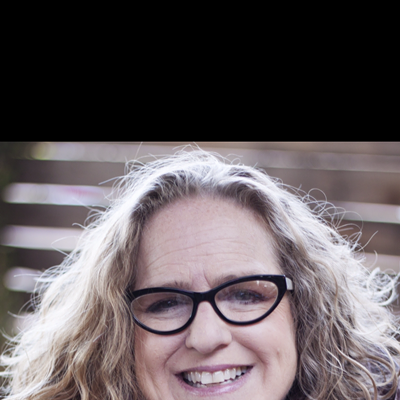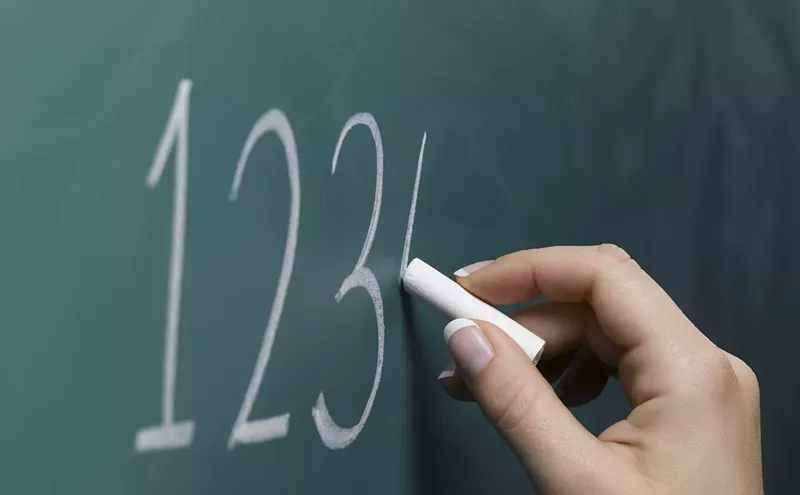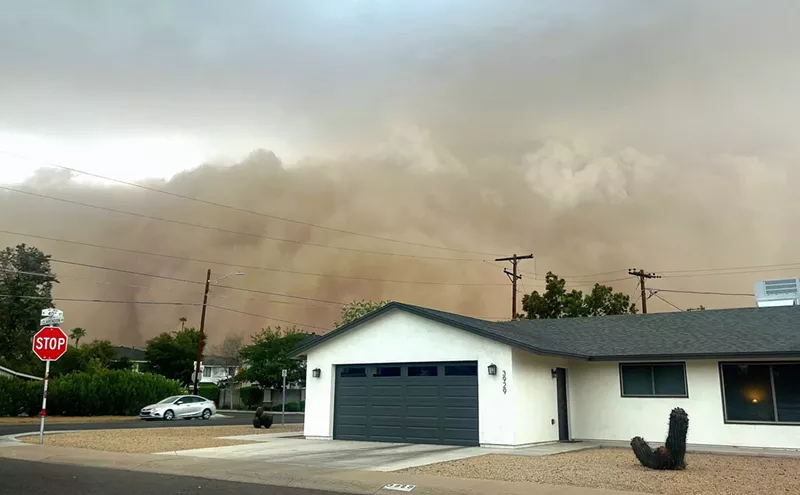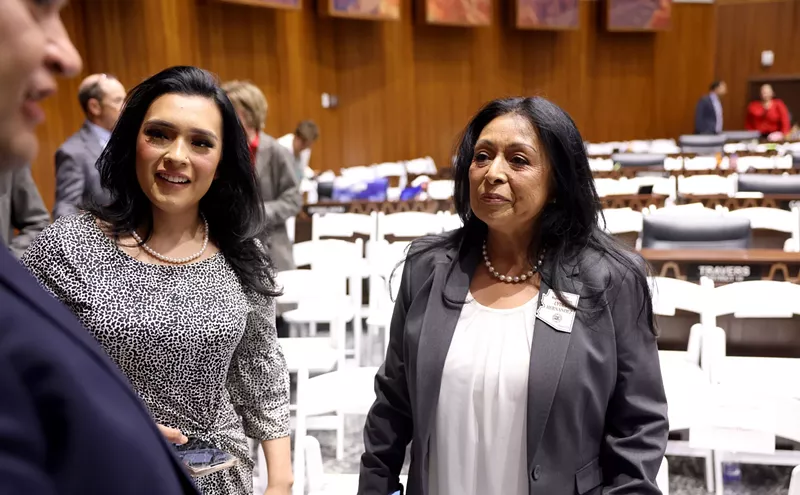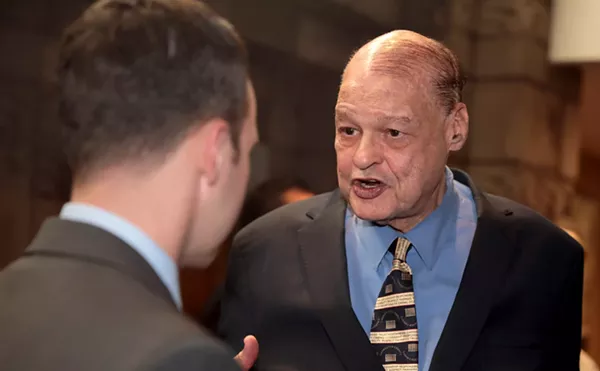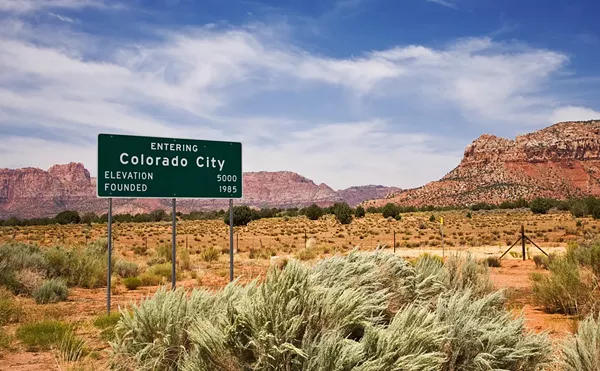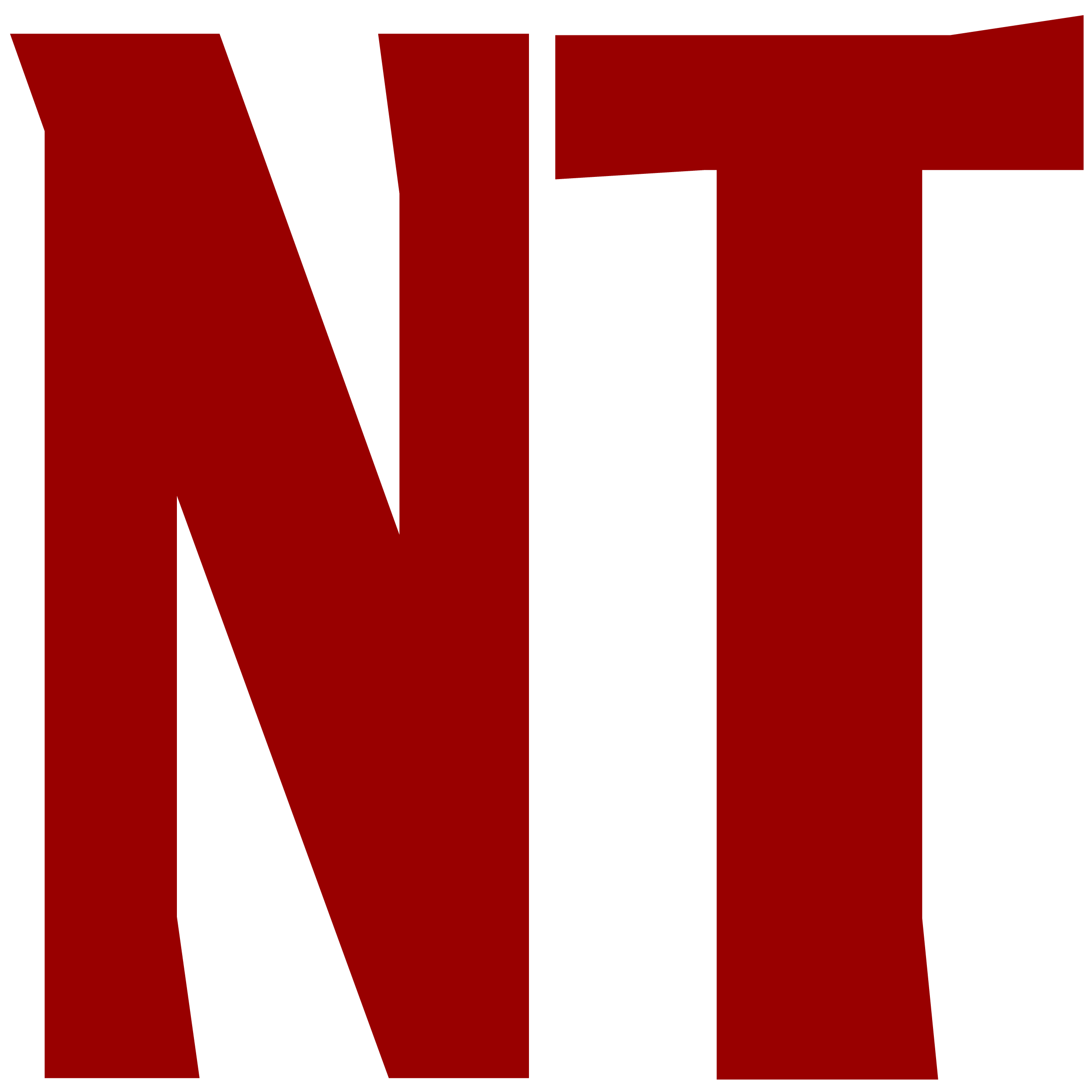Goldstein is a learned man--a Harvard-educated lawyer. Moreover, as an Orthodox Jew, he spends each Saturday--Shabbat--studying Jewish teachings.
But even Goldstein has difficulty describing the notion of an eruv, an imaginary boundary--something like a safe zone in a kids' game of tag, a force field protecting the starship Enterprise. Orthodox Jews create such safe zones to allow the faithful to abide by the many rules of Shabbat without surrendering every convenience or, most gentiles would no doubt believe, necessity.
So to understand how an eruv works, Goldstein explains, one must know the many prohibitions of Shabbat--the seventh day of creation when, according to the Old Testament, God rested.
Goldstein grows so animated during the discussion of Shabbat traditions that his yarmulke slips from his head. He retrieves the prayer cap, pins it back onto his scant hair and continues.
Shabbat begins at sundown Friday with the lighting of candles and blessings over the candles, wine and challah, a braided Jewish bread. It ends at sundown Saturday, often with a Havdalah, a ceremony during which candles are lighted, wine is sipped and a spice box is passed around. All this is meant to separate Shabbat from other days and to ensure that the coming week will be a good one.
Goldstein looks forward to Shabbat all week long. He walks to the synagogue for a service on Friday evening, and to hear a passage from the Torah (the Old Testament) on Saturday morning. Shabbat is a time for introspection. Goldstein and his family sit around the dinner table and sing songs, and Goldstein debates principles of Jewish law with friends.
Yet for the truly devout Jew, observing the day of rest is a lot of work. Meals must be fully prepared before sundown Friday, as no electricity may be used. Fires cannot be lighted. Driving is prohibited. No sports. No gardening. No umbrellas: It is forbidden to erect a tent on Shabbat.
Even trivial conversation is taboo.
Most of these activities are defined in Hebrew as melacha--work--and are encompassed in 39 prohibited acts listed in the Book of Exodus.
"Let no man leave his place on the seventh day," Exodus commands. Jewish law interprets that as prohibiting the carrying of objects outside of the home.
In practical terms, this means David Goldstein can't carry his prayer book and prayer shawl when he walks to synagogue on Shabbat. His wife can't carry her reading glasses. The Goldsteins can't take a casserole to a potluck dinner or a bottle of wine to a friend's house.
The Goldsteins' fellow congregants with young children must stay put on Shabbat; they are not to carry a child or push a stroller outside the house. The same goes for a wheelchair.
Ah, but Jewish law is never that simple; there are many exceptions to the rules. Thousands of years ago, rabbis offered a solution to the schlepping dilemma, in the form of an eruv--a defined area where some of the most impractical rules of Shabbat are suspended.
The Hebrew word "eruv" (pronounced ay-ROOVE) is defined as "mixture, merging, amalgamation or blending of activities and rights." Goldstein explains that the word is closely related to erev, the Hebrew word for evening, the blending of day into night. An eruv blends public and private domains, allowing one to break certain rules of Shabbat while the celebrant is outside the home.
The first eruv took the form of a wall that King Solomon ordered built around Jerusalem. Remember, it's permissible to carry objects inside the home. The wall made the community into one great big home, in effect, and--mazel tov!--it was kosher to carry.
But people inside an eruv may do nothing beyond carrying, and may carry only the bare necessities--no money, no car keys, no pocketbooks, no newspapers. And still no umbrellas, those metaphoric tents.
The modern eruv incorporates existing boundaries--both natural and manmade--such as ravines and highways, supplemented with poles and wires that denote the boundary.
Most eruvin (plural for eruv) are all but invisible, unless you know what to look for. Although it incorporates some physical materials, the eruv exists mainly in the minds of those who believe in it. Chances are, you've been inside an eruv and never knew it. From Seattle, Washington, to St. Louis, Missouri, to Sydney, Australia, Orthodox Jews have erected eruvin.
The first eruv in the United States was probably created in Manhattan during the Fifties. The White House and Supreme Court sit inside the Washington, D.C., eruv. There are more than 100 eruvin in North America.
But none in Phoenix, until now.
David Goldstein, David Segal, Rabbi David Rebibo and a handful of other Orthodox Jews (not all of them named David, by the way) are in the process of constructing an eruv in north central Phoenix. In so doing, Phoenix will become one of the last major metropolitan centers in the U.S. to have an eruv.
Even so, the organizers are proceeding with caution, wary of opposition from civil libertarians, anti-Semites and even other Jews.
Building an eruv is not easy. It requires recruiting rabbinic experts to survey the area, and numerous government entities must approve the use of public rights of way and property for a religious purpose. Goldstein and his committee began planning their eruv in 1994 and expect it will be operable before the end of the year.
Although the Phoenix eruv has been in the works for more than a year--and discussions have involved representatives from the City of Phoenix, Salt River Project, the Arizona Attorney General's Office and the Arizona Department of Transportation--there hasn't been a word about it in the local press. Most Valley Jews are unaware of the activity. Even the Jewish News of Greater Phoenix has purposely ignored the story, bowing to the wishes of the eruv organizers who had intended to keep their plans quiet until the eruv is completed.
Why such secrecy over what gentiles--and even non-Orthodox Jews--would view as an imaginary boundary?
In most communities, creation of eruvin does not spark controversy. But there are notable exceptions. In the mid-Eighties, cities in New York and New Jersey were sued by private citizens and the American Civil Liberties Union for approving eruvin. And two years ago, Orthodox Jews in London unwittingly riled gentiles--and some less-observant Jews--with a request for an eruv.
In each case, the non-Jews were worried about funny-looking people moving into their neighborhoods. And the less-traditional Jews are simply skittish about boundaries, real or imagined. Some felt that the act of denoting territory and ascribing it Judaic significance was akin to re-creating the ghettos and death camps they or their forebears suffered under Nazi domination.
The courts upheld the right of the Orthodox Jews to construct their eruvin, and the London eruv was eventually approved and built.
But Goldstein and his committee don't want to take any chances. After all, this is Arizona.
The Israel Connection, at Seventh Street and Missouri, is probably the largest purveyor of Judaica in town. You can buy a pin that says "oy!" in rhinestones, or a Slinky-esque toy shaped like the Star of David. The fragrances of challah and cookies from Karsh's Bakery next door hang in the air. And although bookshelves line the back of the store, labeled with categories from "Anti-Semitism" to "Shabbat," the clerk has never heard of an eruv.
Neither has the woman who answers the phone at the Jewish Federation of Greater Phoenix.
While eruvin exist in most major cities, they are largely unfamiliar to all but Orthodox Jews. In Phoenix, that's a small group. The Jewish Federation estimates that the Jewish population of metropolitan Phoenix is about 60,000. There are no statistics that tell how many of them are Orthodox, but national tabulations indicate that Orthodox Jews make up about 7 percent of the Jewish population.
While the Jewish presence and population have grown in the Scottsdale area--the Jewish Community Center and well-known synagogues such as Temple Beth Israel are in the process of relocating there--most of the Orthodox Jews remain in north central Phoenix.
That's where the eruv would be.
The proposed eruv would be bound by the Arizona Canal to the north, the Grand Canal to the south, Interstate 17 to the west and Squaw Peak Parkway to the east. For the most part, the parkway's sound wall and the canals would serve as boundaries, but it would be necessary to erect physical markers at all street intersections along the outer edge of the eruv.
A specially trained rabbi must inspect the potential eruv site to be sure it follows the prescriptions of Jewish law, as set forth in the Talmud. A number of such experts have visited the Phoenix site, including Rabbi Barry Freundel of Washington, D.C., who oversaw creation of that city's eruv in the Eighties.
Freundel calls the proposed Phoenix eruv ". . . doable without being obtrusive."
Jewish law requires that the constructors of the eruv gain permission from authorities who control property on the perimeter. In this case, that's the City of Phoenix, Salt River Project and the Arizona Department of Transportation.
Phoenix deputy street transportation director Don Herp says his department is reviewing the eruv plans, and will probably issue a revocable use permit. SRP spokesman Jeff Lane says his company is expected to issue a license this month. ADOT spokesman Robert Johnson did not return repeated calls from New Times.
Goldstein's committee has proposed placing posts approximately five feet in height at the affected intersections. Each post would be topped by a spool of Mylar line that could be strung across the street, although that never would be done. This arrangement would satisfy Jewish law, which requires that doorways be created along the perimeter of the eruv but does not mandate that they be closed.
This would be less obtrusive than stringing wire, Goldstein argues, and more practical. In 1992, a blizzard broke the wire denoting the eruv in Jerusalem, and Hurricane Andrew tore down the wire and other barriers around Miami Beach's eruv--it could not be repaired for a month. Goldstein worries about Phoenix's monsoon season.
Even without the wires, the eruv would have to be checked each week to make certain every part was intact. Most eruvin committees operate a hot line--in Washington, D.C., it's 202-338-ERUV--to allow people to make sure the eruv is operable before each Shabbat.
Perhaps more important than the physical boundary of the eruv itself is its ritual of dedication. The concept of the eruv, as recorded thousands of years ago, was for Jews to create a community by sharing food. People living within a courtyard would bring dishes of food to one another's homes, and in so doing transform the entire area into one home. Today, the ritual continues with the sharing of food at the dedication of the eruv.
The Phoenix eruv would encompass four Orthodox synagogues: Shaarei Tzedek, Agudat Achim, Young Israel of Phoenix and Beth Joseph. Ironically, another synagogue, Chabad of Greater Phoenix, located at the intersection of 21st Street and Glendale Avenue, sits just east of the Squaw Peak Parkway, the eastern extreme of the proposed eruv.
Chabad is included in Phase B of the eruv plan, Goldstein says, adding, "We have to walk before we can run."
The Chabad center is affiliated with Chabad-Lubavitch, a sect of Hassidim. Some Chabad-Lubavitchers have traditionally scoffed at the notion of an eruv, because it is not foolproof, Washington, D.C.'s Rabbi Freundel says. But Chabad Rabbi Zalman Levertov says his congregants would like an eruv, even if not all of them would use it.
Levertov says he will not become involved with the eruv until it includes Chabad.
Other local rabbis are steering clear of the eruv as well. Rabbi Bob Kravitz, a representative of the American Jewish Committee, finds himself in an odd position--since his organization is a stickler about separation of church and state.
Kravitz, who is not Orthodox, says he has no use for an eruv. He wants the government kept out of the process as much as possible.
He says, "If there are folks who are made more religiously comfortable by establishing an eruv, that's their business. It's not the type of situation where any sort of public funds should be used, and it's not the type of creation that should involve the cities in any way."
Goldstein says the cost of erecting the eruv--estimated at $15,000 to $30,000, including liability insurance--would be paid by the Orthodox Jewish community.
Sam Rabinove, national legal director of the American Jewish Committee in New York, found his loyalties strained a decade ago, when the New Jersey chapter of the American Civil Liberties Union sued the city of Long Branch, New Jersey, after the city agreed to allow construction of an eruv. Rabinove, a member of the ACLU, was pleased when--after losing in U.S. District Court--the ACLU did not pursue the case.
While Rabinove opposes government involvement in religion, he supports the concept of the eruv.
He says, "Unlike the Menorah on public property or a creche, the eruv is a utilitarian device."
Louis Rhodes, executive director of the Arizona chapter of the ACLU, says there's a fine line between condemning the eruv because it may offend others, and defending the rights of those who want it.
Rhodes says, "My personal opinion is, well, if other people get a right to do this, and you could grant a business or an individual variance, why isn't this practically the same thing? In fact, if anything, it might be something to step in and say, 'Hey, no, don't step on their religious liberty to do this.'"
But then again, he says, he's not so sure.
In between chores at the family restaurant, David Segal pulls up a chair and joins David Goldstein. Segal is devoted to the local eruv cause; in fact, he heads up the eruv project with Goldstein. Segal wears a golf shirt, long shorts and tennis shoes; like Goldstein, he wears a full beard and a yarmulke.
Goldstein and Segal are a little self-conscious about the stringency of their religion, particularly of Shabbat, but they're also eager to bring nonobservant Jews into the flock.
While some criticize the concept of the eruv as a way of sidestepping Jewish law, Segal and Goldstein look at the eruv as one way to get more people involved in Orthodox Judaism, by allowing people with young children and others to enjoy Shabbat.
Rabbi Freundel agrees. He says, "Rather than being a fudge of the law, it is the brilliance of somebody who can understand the subtleties of the law in order to be able to do something that is a positive step in terms of making people's lives easier and making the Sabbath more meaningful.


